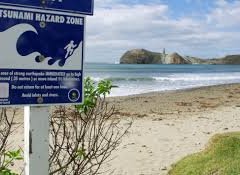News
Will you believe official warnings in future?
7 Aug 17

In the wake of public safety warnings issued for recent events like cyclones and tsunami, between 8 and 11% of New Zealand adults are less likely to believe them.
A nationwide Horizon Research survey for Blackland PR in May 2016 asked people to think about the public safety warnings in the past 12 months (such as those before Cyclones Cook and Debbie, and tsunami alerts following recent earthquakes) and what actually happened in the event the warning was about. It then asked if respondents were more or less likely to believe future warnings about high winds, heavy rain, cyclones, other severe weather events, tsunami, volcanic activity, water quality and food safety.
Results indicate that:
- Between 7% and 11% of adult New Zealanders (18 years of age or over) feel that they will be less likely (“Much less likely” plus “Less Likely”) to believe future public safety warnings for the categories measured.
- Between 35% and 48% felt they would be more likely (“Much more likely” plus “More Likely”) to believe future public safety warnings.
- The percentage who felt they would be less likely to believe public safety warnings varied between category:
- For weather related events - high winds, heavy rain and other severe weather events – 9% overall felt they would be less likely to believe future warnings. Only 1%, however, felt they would be much less likely to believe the warnings; 8% were less likely to believe them. For Cyclones, however, a total of 11% said they were now less likely to believe warnings; just over 1% said they were much less likely to believe the warnings while just over 9% said they were less likely to believe.
- For tsunami and volcanic activity, 9% felt they would be less likely to believe warnings.
- For water quality, 8% were less likely to believe the warnings, but 49% were more likely to – the highest of all the categories measured.
- For water quality, 7% were less likely to believe future warnings.

In general, the tendency to be less likely to believe future warnings declined with increasing age. Conversely, the tendency to be more likely to believe future warnings increased with increasing age.
A higher percentage of females than males said they were now more likely to believe future warnings, particularly about water and food safety.
Those under 25 years had the highest increased disbelief in future warnings. For example, on average, 22% of those under 25 years said they were less likely to believe future weather warnings.
As education levels rose, respondents were generally more inclined to say they were neither more nor less likely to believe future warnings. However, for Tsunami, 16% of those with post-graduate degrees said they were less likely to believe future warnings, the highest of all educational groups.
There were no statistically significant differences by ethnicity, although there were indications that Asian respondents were less likely than average to believe warnings about cyclones and high winds.
Respondents in Bay of Plenty, Northland, Wairarapa and Nelson/Tasman/Marlborough appeared to be more inclined to say they were less likely to believe future warnings than respondents in other regions.
The study is discussed in this Nine to Noon Radio New Zealand interview and in this story on Stuff.
Survey methodology:
- 1,270 respondents from Horizon Research’s national HorizonPoll panel, representing the New Zealand population 18+, responded to the survey between 16 and 24 May 2017.
- The sample is weighted on age, gender, education, personal income and ethnicity, and has a maximum margin of error at a 95% confidence level of ±2.8% overall.
HorizonPoll Online Survey system
and website developed by BEWEB
Copyright © 2010. HorizonPoll incorporating ShapeNZ - Listening to New Zealand


